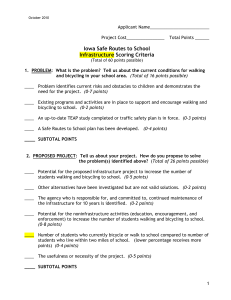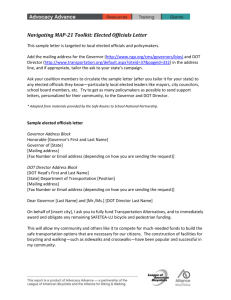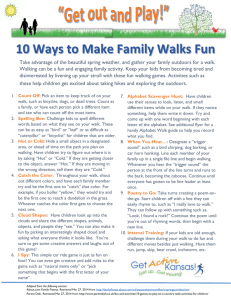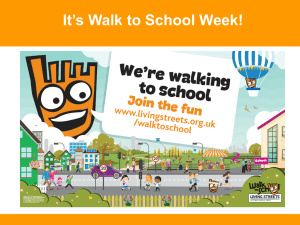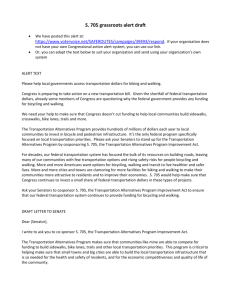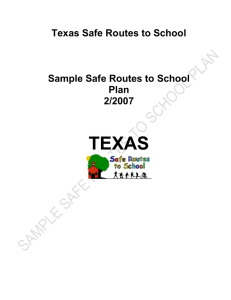February 2015
advertisement
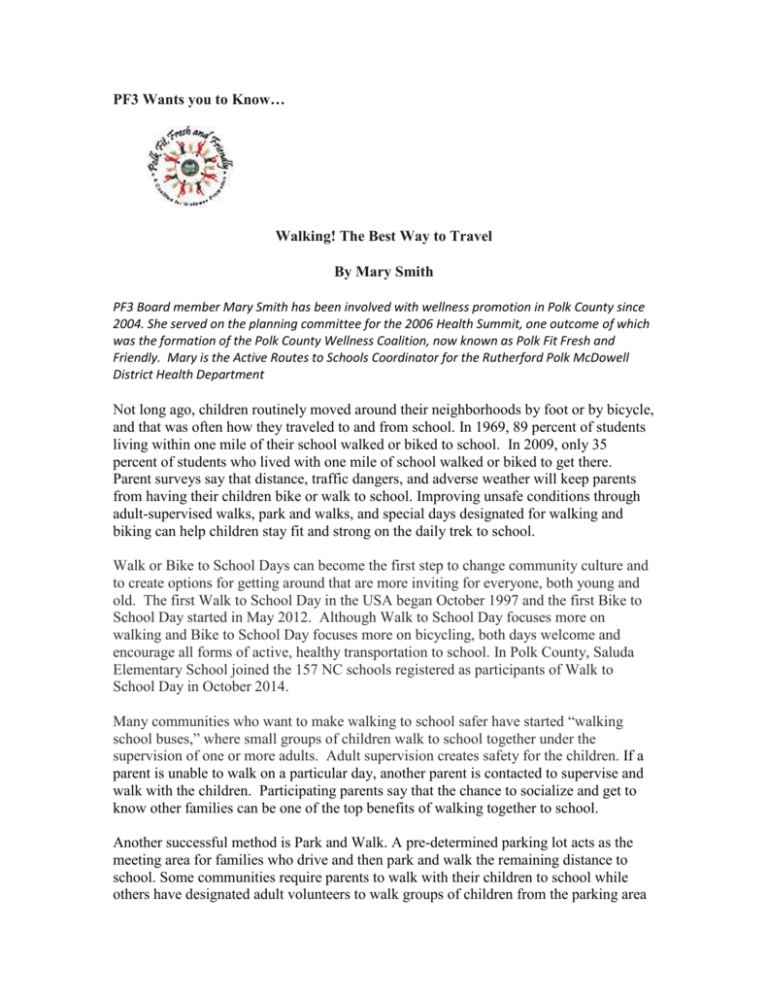
PF3 Wants you to Know… Walking! The Best Way to Travel By Mary Smith PF3 Board member Mary Smith has been involved with wellness promotion in Polk County since 2004. She served on the planning committee for the 2006 Health Summit, one outcome of which was the formation of the Polk County Wellness Coalition, now known as Polk Fit Fresh and Friendly. Mary is the Active Routes to Schools Coordinator for the Rutherford Polk McDowell District Health Department Not long ago, children routinely moved around their neighborhoods by foot or by bicycle, and that was often how they traveled to and from school. In 1969, 89 percent of students living within one mile of their school walked or biked to school. In 2009, only 35 percent of students who lived with one mile of school walked or biked to get there. Parent surveys say that distance, traffic dangers, and adverse weather will keep parents from having their children bike or walk to school. Improving unsafe conditions through adult-supervised walks, park and walks, and special days designated for walking and biking can help children stay fit and strong on the daily trek to school. Walk or Bike to School Days can become the first step to change community culture and to create options for getting around that are more inviting for everyone, both young and old. The first Walk to School Day in the USA began October 1997 and the first Bike to School Day started in May 2012. Although Walk to School Day focuses more on walking and Bike to School Day focuses more on bicycling, both days welcome and encourage all forms of active, healthy transportation to school. In Polk County, Saluda Elementary School joined the 157 NC schools registered as participants of Walk to School Day in October 2014. Many communities who want to make walking to school safer have started “walking school buses,” where small groups of children walk to school together under the supervision of one or more adults. Adult supervision creates safety for the children. If a parent is unable to walk on a particular day, another parent is contacted to supervise and walk with the children. Participating parents say that the chance to socialize and get to know other families can be one of the top benefits of walking together to school. Another successful method is Park and Walk. A pre-determined parking lot acts as the meeting area for families who drive and then park and walk the remaining distance to school. Some communities require parents to walk with their children to school while others have designated adult volunteers to walk groups of children from the parking area to school. Park and Walk campaigns can reduce traffic congestion around a school and encourage physical activity for parents and children. The Park and Walk strategy gives the chance to walk to school to families who live far from the school or who do not have a safe route to school. Walking and bicycling to school offer opportunities for children to get physical activity as part of their daily routine. Research shows that physical activity helps improve academic performance in children and teens. Walking and bicycling to school not only increase people’s health, but also help the health of the earth by reducing carbon usage. A daily walk to school offers fresh air and time in nature. When appropriate and safe, walking and bicycling to school can help children develop a sense of independence that is important for development. If you would like to learn more about Safe Routes to School programs, contact Mary Smith, Active Routes to School Coordinator, at the Rutherford-Polk-McDowell District Health Department at 828-460-7328.
